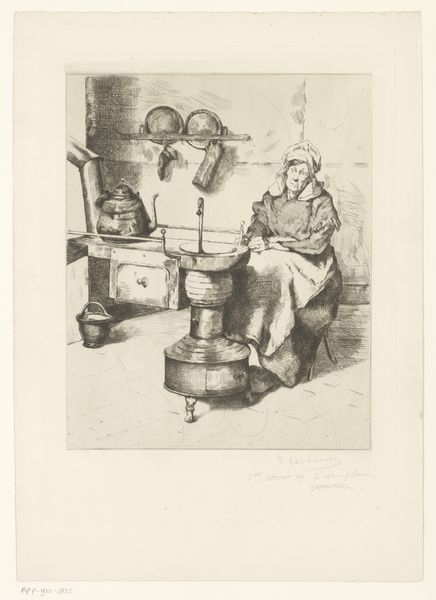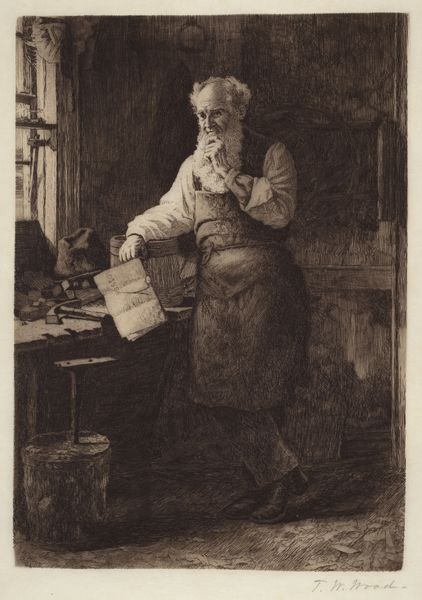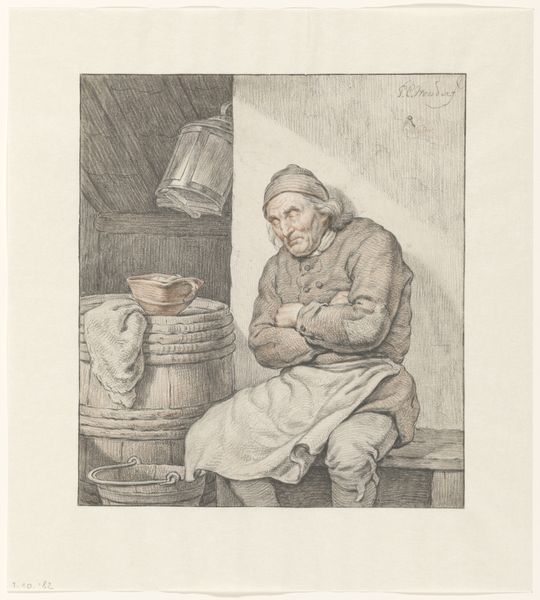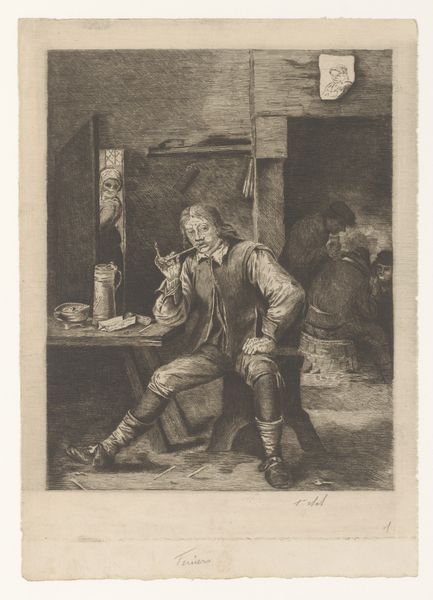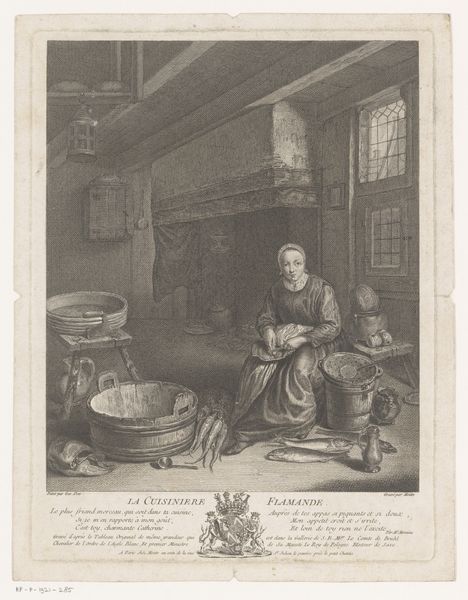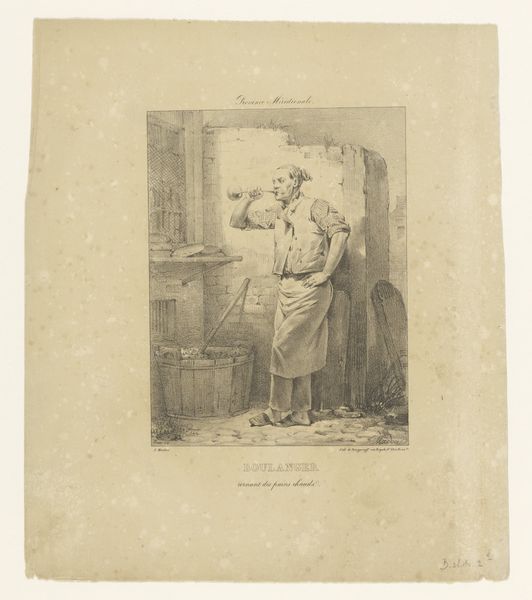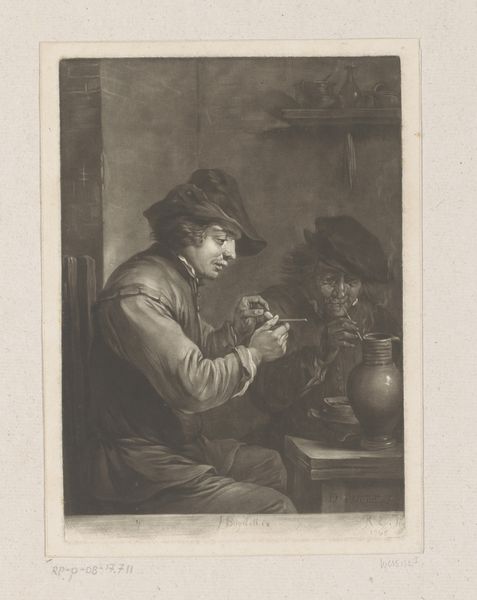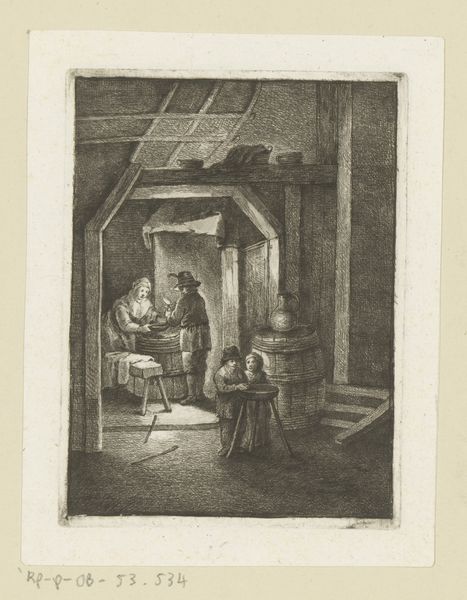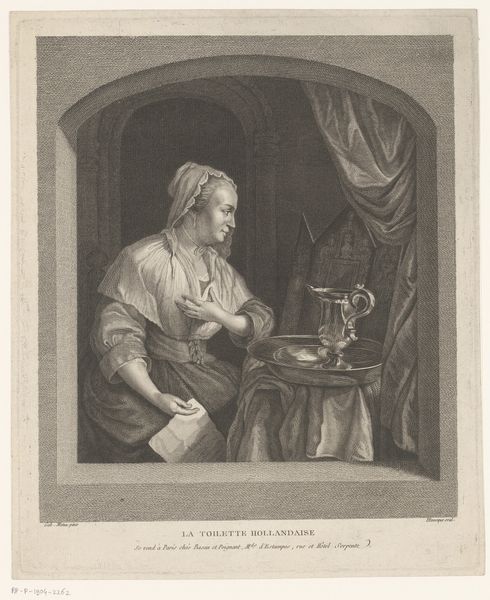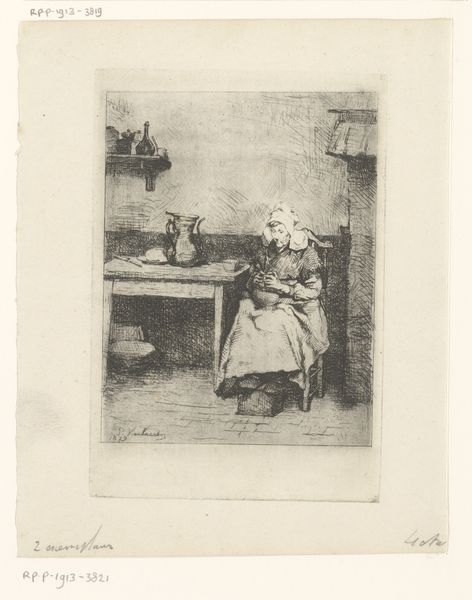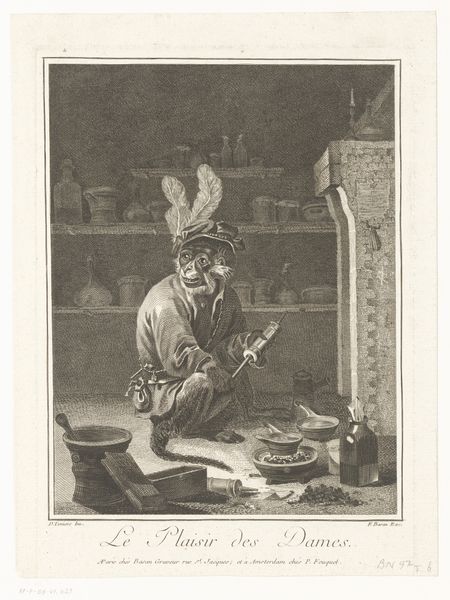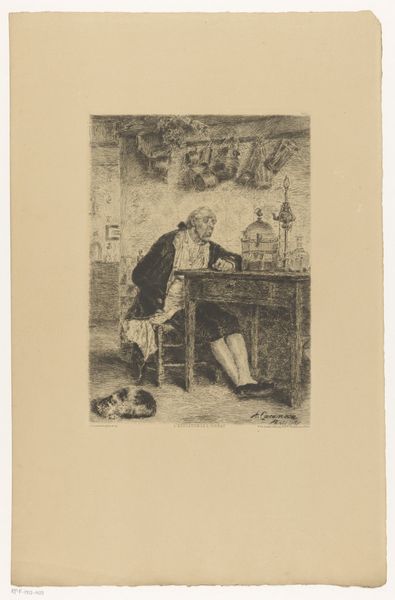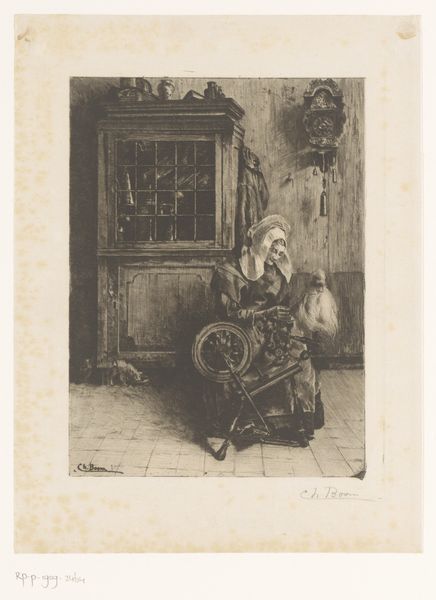
print, etching, engraving
#
portrait
# print
#
etching
#
caricature
#
genre-painting
#
engraving
#
realism
Dimensions: height 289 mm, width 220 mm
Copyright: Rijks Museum: Open Domain
Editor: So, this print is called "Woman Warming her Feet by a Stove in the Kitchen," made sometime between 1862 and 1908 by Piet Verhaert. It looks like an etching or engraving. There's something so familiar and comforting about the scene, yet the woman's expression is quite solemn. What jumps out at you when you see it? Curator: I see layers of memory embedded in this seemingly simple scene. The stove, for example, is more than just a source of heat. It’s a symbol of the hearth, the center of domestic life. It carries echoes of countless meals prepared, stories shared, and lives lived within its glow. What emotions does the stove spark in you, or in others who view it? Editor: I guess it does evoke that feeling of "home," even if it’s a home I’ve never known personally. Curator: Precisely. The woman herself, with her posture and clothing, becomes a vessel for representing generations of women who maintained those homes. Even the tiled floor plays into it: it reminds us of countless interior paintings we may have come across depicting a modest yet warm home. What would happen to the emotional resonance if we changed her clothes? If she had stood instead of sat? Editor: Interesting. If her clothes were modern, it wouldn't read as a timeless domestic scene; it would be about a specific moment. Standing, she would appear ready to leave, while the pose invites contemplation of the present moment. I had not thought of her pose as symbolic, only practical. Curator: Consider then: could the artist have presented other equally practical choices for the depicted situation? Perhaps he consciously crafted it to make the emotional statement we are ascribing to the woman? Through her image, we glimpse continuity across generations. Editor: That's amazing. Now that you point it out, every element seems carefully chosen to maximize this feeling. It is very striking to learn to read objects and people for their ability to evoke our shared memories. Curator: Indeed! Artists employ visual shorthand to tap into our collective consciousness. Recognizing this visual language elevates our appreciation.
Comments
No comments
Be the first to comment and join the conversation on the ultimate creative platform.
